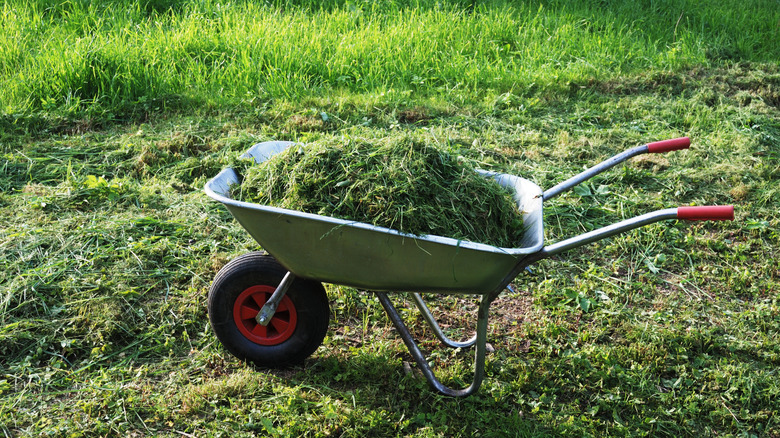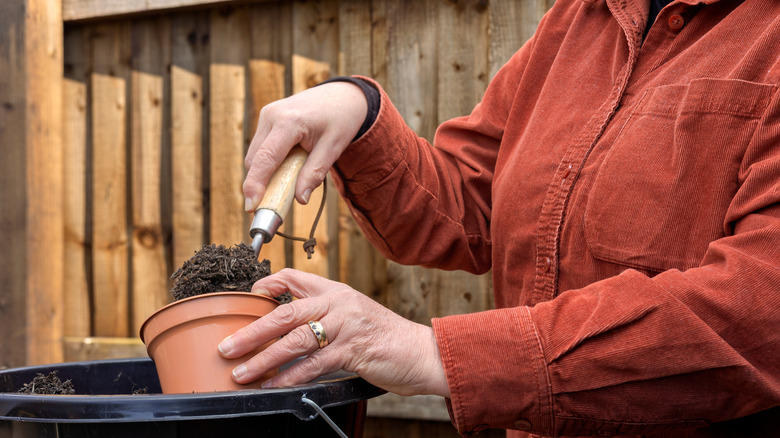Will Grass Grow If You Use It As Fertilizer In Potted Plants?
If you're a gardener, you're likely always looking for new and creative ways to help your plants grow — especially natural and organic approaches. Fertilizing your potted plants with a layer of grass is just one of many ways to repurpose your lawn clippings for a healthier yard and garden. However, this may raise the question: Is there a risk of growing unwanted grass in your potted plants if you fertilize them with clippings from your lawn?
The answer is somewhat complex. Mulching or fertilizing with grass clippings can be good for the environment (reusing clipped grass instead of tossing it into yard waste bags can reduce your community's waste), but it does carry some risks. Luckily, it is not possible for grass to germinate from single blades. Even so, un-composted lawn clippings can contain seeds from other plants and weeds that could pop up inside your potted plants, and could also harbor remnants of herbicides. The key to safely using grass clippings in your potted plants is to compost them correctly before adding them to the soil.
How to safely compost your grass clippings
Grass clippings are a wonderful byproduct of maintaining a beautiful yard — who isn't a fan of free fertilizer? On the other hand, it's important to properly compost grass clippings before adding them to your container gardens in order to avoid unwanted weed seedlings in your potted plants. To compost your grass clippings in a container, combine a ratio of 50% clippings, also known as green material, to 50% brown material. For brown material, you can use anything from matte cardboard and paper towel or toilet paper rolls to wool, cotton, vacuum cleaner sweepings, and dryer lint. Add several handfuls of garden soil as you mix your brown and green materials.
In order for the compost to reach a high enough temperature to kill weed seeds and seedlings, it's important to employ hot composting methods. The not-so-obvious difference between hot and cold composting is that a hot compost pile needs more oxygen and water — make sure to turn the compost at least once daily and give it enough water so that when you squeeze the compost in your hand, it feels like a damp sponge. Once your compost pile reaches a temperature of at least 158 degrees Fahrenheit, you can be certain that any unwanted seedlings have been snuffed out. Use your compost once it has the appearance of rich garden soil, and add it to your potted plants with peace of mind.

